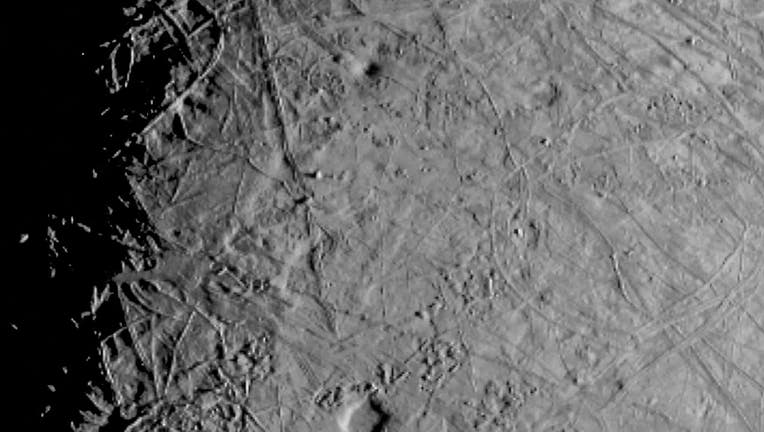Photos: NASA's Juno spacecraft flies by Jupiter moon Europa, closest in years

The complex, ice-covered surface of Jupiter’s moon Europa was captured by NASA’s Juno spacecraft during a flyby on Sept. 29, 2022. At closest approach, the spacecraft came within a distance of about 219 miles (352 kilometers). Credit: NASA/JPL-Caltec
NASA’s Juno spacecraft has made the closest approach to Jupiter’s tantalizing, icy moon Europa in more than 20 years.
Juno on Thursday zipped within approximately 219 miles (352 kilometers) of Europa, thought to have an ocean flowing beneath its thick frozen crust, raising the possibility of underwater life. Scientists hailed the flyby as a success, with four pictures beamed down and released within several hours.
Scientists had hoped to observe possible water plumes shooting from the surface of Europa, close in size to Earth's moon. But none were immediately visible in the initial look. Click here to see stunning enhanced and processed images of Europa submitted to NASA by people around the world.
RELATED: Webb, Hubble telescopes capture DART impact in stellar images
"We have to be at the right place at just the right time," Juno's chief scientist, Scott Bolton of Southwest Research Institute in San Antonio, said in a statement.
John Bordi, deputy mission manager at NASA’s Jet Propulsion Laboratory, expected the spacecraft to go "screaming by pretty fast," with a relative velocity of almost 15 miles per second (23.6 kilometers per second).
RELATED: Blue Origin capsule blasts away from failing rocket during dramatic in-flight abort
The first photo from the flyby is a closeup of Europa's equatorial region, crisscrossed by ridges, troughs and possibly an impact crater.
RELATED: NASA to roll back Artemis I rocket to prepare for Hurricane Ian; next launch attempt in November
The latest observations will help NASA plan for its Europa Clipper mission, due to launch in 2024 and arrive at the Jovian system in 2030. The European Space Agency also plans close encounters with its Jupiter Icy Moons Explorer, or Juice, lifting off next year.
NASA's former Galileo spacecraft still holds the Europa flyby record, passing within 218 miles (351 kilometers) in 2000.

